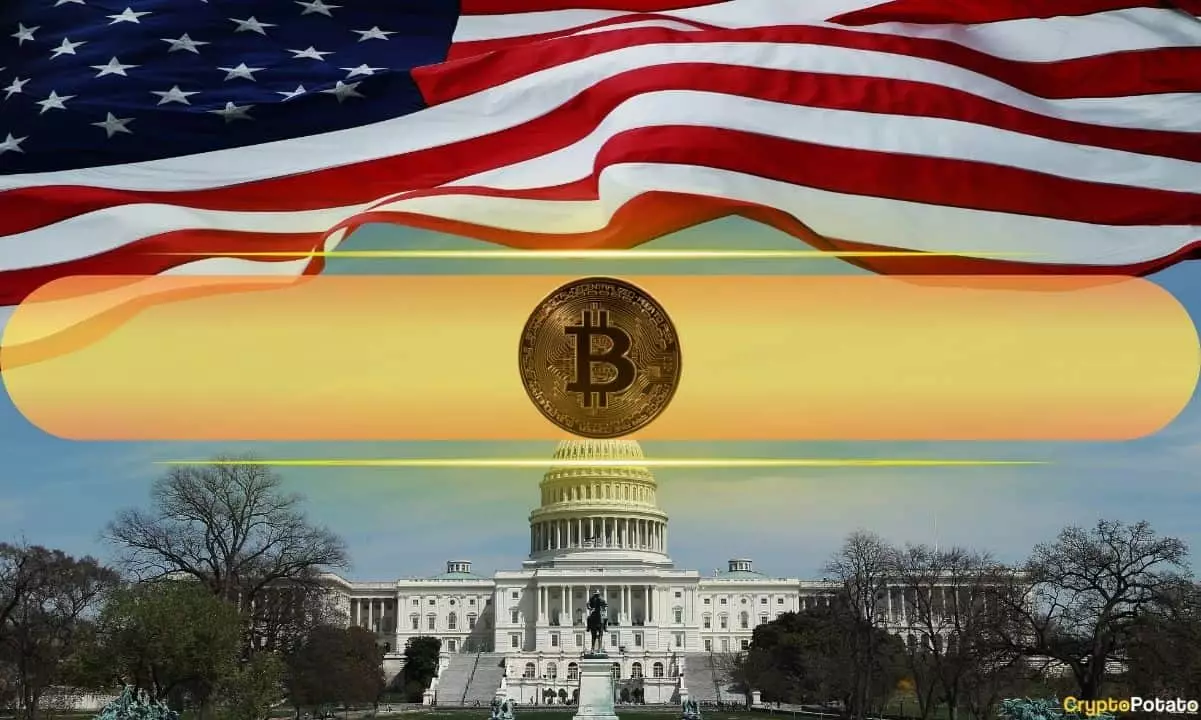In an era defined by digital revolution, the Trump administration has ignited a conversation that could reshape America’s financial landscape. The initiative, as articulated by Bo Hines, Executive Director of the President’s Council of Advisers on Digital Assets, proposes the establishment of a U.S. Bitcoin Reserve. Funded through unconventional revenue sources—like tariffs and a revaluation of existing gold assets—this move signals an ambitious shift towards embracing cryptocurrency in a way that challenges traditional finance.
The proposition sounds not only innovative but also adventurous, introducing a fresh avenue for government revenue in an age still grappling with bureaucratic inertia. What’s particularly compelling about this initiative is the potential operational latitude it provides: tapping into revenues that aren’t tied directly to the federal budget could enable significant Bitcoin acquisitions without exacerbating the national debt or reallocating limited resources.
Reevaluating Assets and Revenue Streams
One of the most striking aspects of Hines’s proposal is the suggestion to revalue U.S. gold certificates, which have remained stagnant at an antiquated valuation of $43 per ounce. Transitioning that figure to align with current market rates—roughly $3,200—could create a paper surplus that is poised to benefit the nation digitally, giving a fresh lease on a centuries-old asset. This audacious idea not only shows fiscal creativity but also underscores a larger question: why cling to obsolete valuations when the economic landscape has profoundly evolved?
Historically, gold has been viewed as an unassailable asset. However, Hines makes a strong case that the evolution of cryptocurrency—as an emerging alternative—could serve as a modern financial bulwark. It’s this willingness to venture beyond traditional financial paradigms that the U.S. needs to seize the moment rather than remain tethered to a timeworn fiat system.
Strategic Partnerships Across Government
The administration’s approach is not merely an isolated endeavor; it’s a multi-agency effort involving several federal bodies, including the Department of Commerce and the Treasury. The creation of a working group emphasizes a collaborative spirit often lacking in modern governance. By actively engaging various sectors, the initiative benefits from diverse insights and expertise, creating a unified effort to position the U.S. as a leader in digital assets.
However, challenges loom large on the political horizon, as proposed measures still await Congressional approval. This may be the Achilles heel of the initiative; political unity and bipartisan support will be paramount. If aligned interests between various parties cannot be cultivated, the well-meaning project could stall in legislative limbo.
Two-Fold Vision: The Bitcoin Act of 2025
A focal point of the initiative is the upcoming Bitcoin Act of 2025, spearheaded by Senator Cynthia Lummis. This bill is crucial to not only provide a legal framework for the U.S. Bitcoin Reserve but also indicate a readiness to embrace the cryptocurrency boom. Lummis’s vision combines regulatory clarity with innovation—qualities that are instrumental for a burgeoning digital currency market. However, while legislators laud the potential advantages, skepticism abounds regarding whether crypto’s decentralized nature can coexist with traditional regulations.
The administration’s willingness to experiment with funding sources, whether using seized assets from civil and criminal forfeitures or exploring budget-neutral efficiencies, marks an insightful pivot towards fiscal responsibility. Importantly, this approach claims to relieve taxpayers of the burdens associated with such ventures, a point that will resonate well amid today’s economic anxieties.
Paving the Path for an Innovative Financial Future
The overarching vision is ambitious: making America the “crypto capital of the world.” Hines envisions blockchain technology as a robust solution to the inefficiencies of our antiquated banking systems. Delays, hidden fees, and a lack of transparency are rampant in traditional finance, making a compelling case for the modernization that cryptocurrencies can provide. By figuring out how to integrate such technologies into everyday transactions, the administration seems to be hinting at a transformative economic renaissance.
However, reality check is essential. An environment ripe for progress comes with its own set of roadblocks—public skepticism, regulatory hurdles, and the real challenge of education and awareness surrounding digital assets. In confronting these challenges, the administration must maintain momentum while addressing concerns surrounding digital equity and privacy.
Embracing this initiative means venturing into uncharted waters, but it also requires strategic foresight and an obsession with practical solutions. The U.S. sits at a precipice—either it navigates the digital revolution deftly or risks being left behind in a rapidly advancing world.















